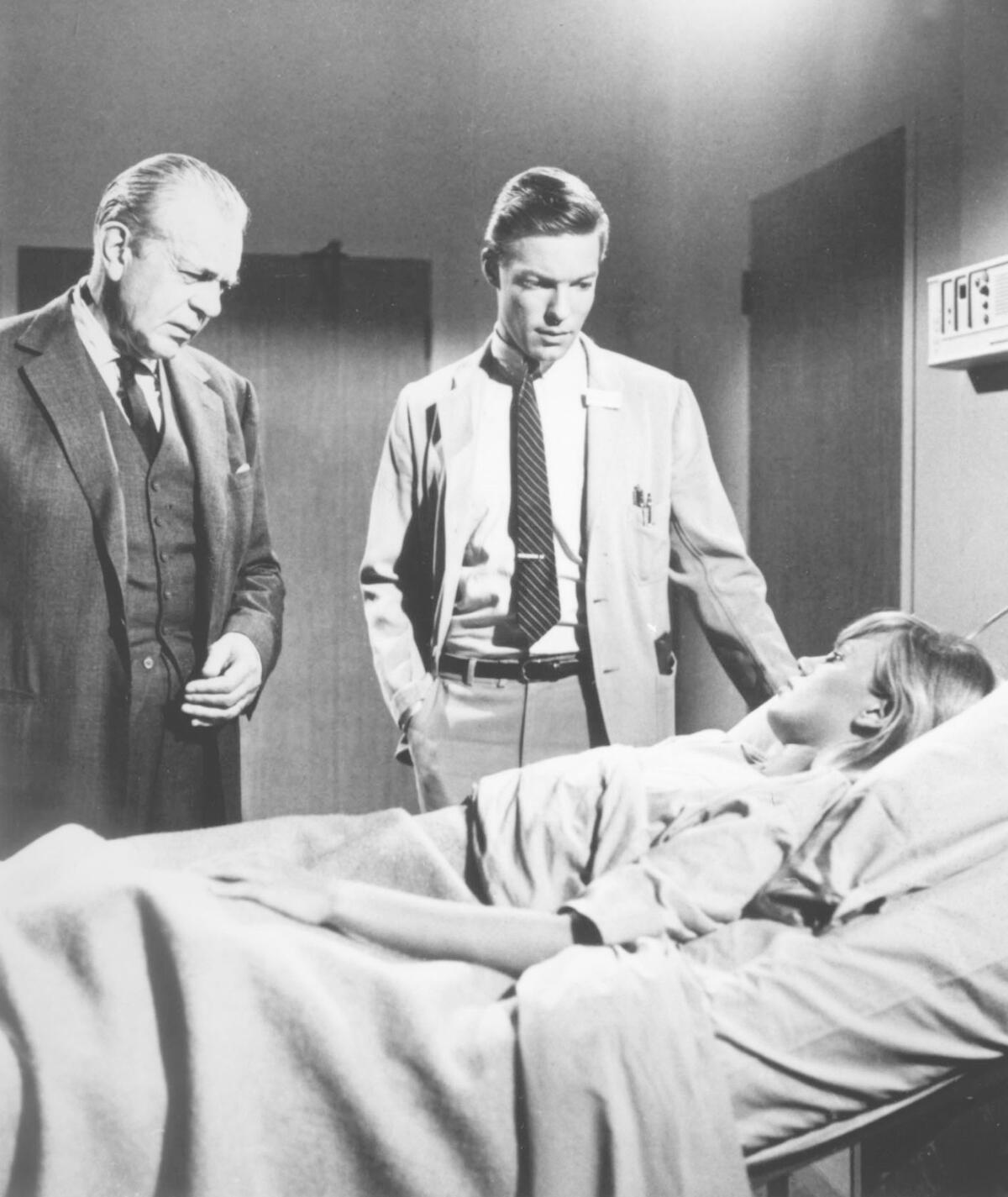Richard Chamberlain, who soared to fame as the handsome young Dr. Kildare on television in the early 1960s and two decades later reignited his TV stardom as a seasoned leading man in the highly rated miniseries “Shogun” and “The Thorn Birds,” has died. He was 90.
A Los Angeles native, Chamberlain died Saturday night in Waimanalo, Hawaii, of complications from a stroke, according to his publicist, Harlan Boll.
“Our beloved Richard is with the angels now. He is free and soaring to those loved ones before us,” Martin Rabbett, his lifelong partner, said in a statement reported by Associated Press. “How blessed were we to have known such an amazing and loving soul. Love never dies. And our love is under his wings lifting him to his next great adventure.”
In a six-decade career that spanned television, movies and theater, Chamberlain played a wide variety of roles — including Hamlet and Professor Henry Higgins on stage and a swashbuckling French musketeer and a frontier America trapper on screen.
“I need to do theater. If I don’t, I feel something is missing,” Chamberlain told The Times in 1984. “But I love doing television and movies too. And I think I’ve shown that an actor can do all three.
“As I’ve said before, the fun in acting is playing different roles. If you’re just going to play one role all your life, you might as well be selling insurance.”
Chamberlain was a virtual unknown with a limited number of TV guest shots and a low-budget movie to his credit when he was cast by MGM as Dr. Kildare in the hour-long medical drama. As Dr. James Kildare, an idealistic young intern at Blair General Hospital, Chamberlain starred opposite Raymond Massey as his wise medical mentor, Dr. Leonard Gillespie.
“The series may be among the solid hits of the season,” predicted Cecil Smith, The Times’ late TV columnist, shortly after “Dr. Kildare” made its debut in 1961. “Chamberlain is an agreeable, attractive young actor with great warmth; he’s an ideal foil for the expert Massey, one of the finest actors of our time.”
Overnight, the tall, blond, blue-eyed, 27-year-old former college sprinter, who later admitted to being “as green as grass” as an actor, became a teen idol and a fan-magazine favorite who was soon generating up to 12,000 fan letters a week.
“Dr. Kildare,” which premiered on NBC the same season as another popular medical drama on ABC, “Ben Casey,” starring Vince Edwards, ran for five years.
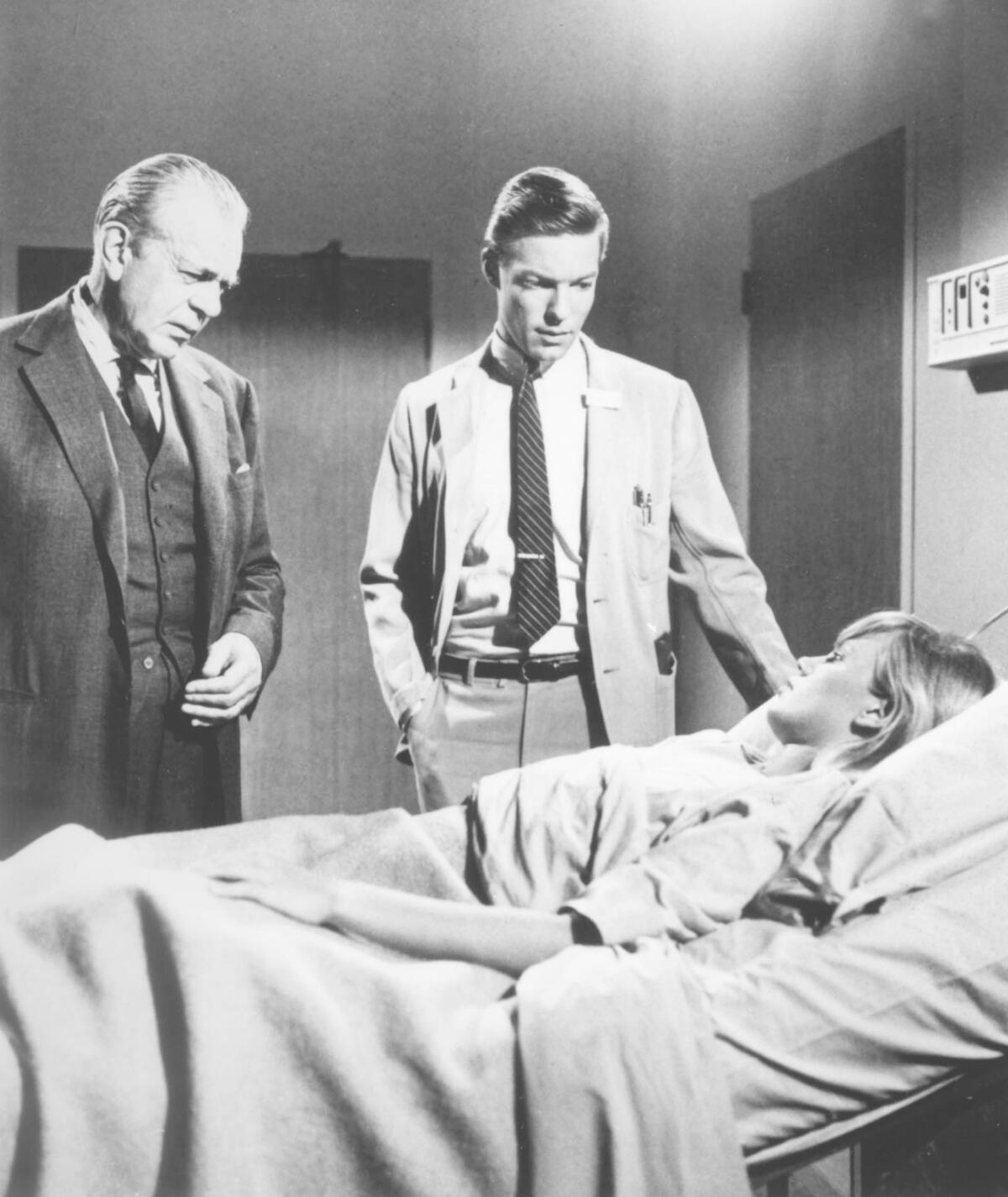
Raymond Massey as Dr. Gillespie, left, and Richard Chamberlain as Dr. Kildare with a patient in the 1960s NBC series “Dr. Kildare.”
(NBC)
During his time off from the series, Chamberlain starred in two movies: as a trial lawyer in the 1963 courtroom drama “Twilight of Honor,” and opposite Yvette Mimieux in the 1965 dramatic love story “Joy in the Morning.”
But his role as the noble TV doctor remained his greatest claim to fame at the time, his popularity generating comic books, trading cards, a board game, a doll and other merchandise bearing his white-coated “Kildare” likeness.
Chamberlain’s weekly TV exposure also led to a brief side career as a recording artist, one that revealed a pleasing baritone on releases that included the album “Richard Chamberlain Sings.”
“Kildare had been an incredible break for me, and a grand, if grueling, rocket ride,” the actor recalled in his 2003 memoir, “Shattered Love.” “Though I was considered more a heartthrob than a serious actor, it had put me on the map.”
That point was driven home during a luncheon gathering at Massey’s home when veteran English actor Cedric Hardwicke told him, “You know, Richard, you’ve become a star before you’ve had a chance to learn to act.”
After his five-season run on “Dr. Kildare,” Chamberlain turned down a number of new TV-series offers, preferring instead to concentrate on theater and film.
His first attempt on Broadway — in a troubled 1966 production of a musical version of “Breakfast at Tiffany’s” with Mary Tyler Moore — ended when producer David Merrick pulled the plug on the much-anticipated musical’s opening after only four preview performances in New York.
Chamberlain went on to appear in what he called his first serious film, playing Julie Christie’s occasionally violent husband in “Petulia,” a 1968 drama directed by Richard Lester.
Determined to obtain “some solid acting training,” he moved to England, where he immediately was cast in a 1968 six-hour BBC production of Henry James’ novel “The Portrait of a Lady.” Instead of joining an acting academy in London, as he had planned, Chamberlain received what he referred to as on-the-job training during his more than four years living in England.
Indeed, “The Portrait of a Lady” led to a challenging, most unlikely role for TV’s Dr. Kildare: Hamlet.
His performance in the BBC production of the James novel had drawn the attention of the well-known Birmingham Repertory Company, which was looking for a known actor who could fill seats for its upcoming production of the Shakespeare tragedy.
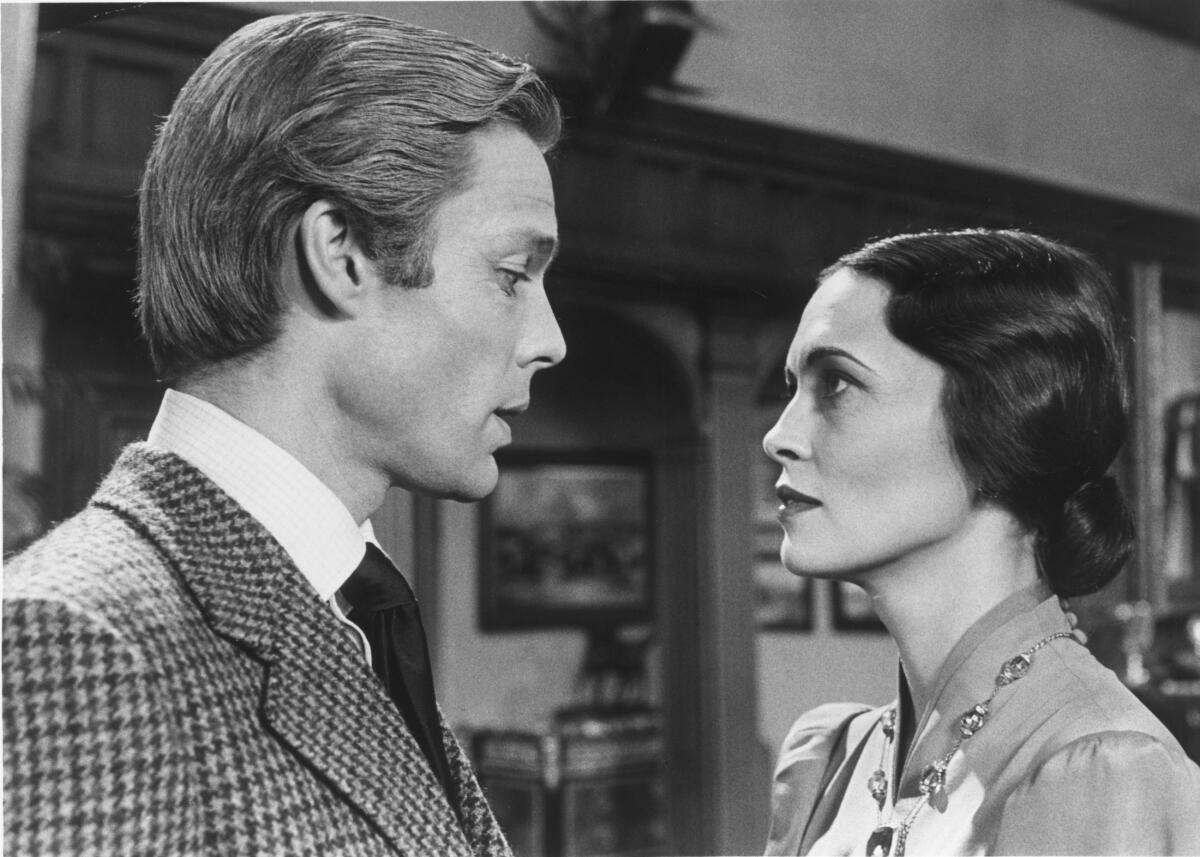
Richard Chamberlain, left, as Edward VIII, acts with Faye Dunaway, as Wallis Simpson, on the ABC Television Network’s re-creation of their love story in “Portrait: The Woman I Love” in November 1972.
(ABC)
After undergoing long and intensive rehearsals, Chamberlain said he was amazed when most of the London critics gave him “quite good” reviews. He later went on to play Hamlet in a different production for Hallmark Television.
“Having graduated from pretty boy to actor, I was at last taken seriously, and it was an exhilarating experience,” he wrote.
Chamberlain appeared in director Bryan Forbes’ 1969 film “The “Madwoman of Chaillot,” starring Katharine Hepburn, and he starred as the Russian composer Tchaikovsky opposite Glenda Jackson in director Ken Russell’s 1970 film “The Music Lovers.”
Among his other film credits in the ‘70s were “The Three Musketeers” (1973), “The Towering Inferno” (1974) and “The Last Wave” (1977).
Chamberlain’s early work on the American stage included starring in the Seattle Repertory Theater’s 1971 production of Shakespeare’s “Richard II,” a performance deemed by Times theater critic Dan Sullivan as “an astonishingly accomplished one.” And his 1973 starring role in “Cyrano de Bergerac” at the Ahmanson Theatre in Los Angeles earned him a Los Angeles Drama Critics’ Circle Award.
Over the years, Chamberlain starred on Broadway four times, all in revivals: as the Rev. T. Lawrence Shannon in “The Night of the Iguana” (1976-77), as Charles in “Blithe Spirit” (1987), as Professor Henry Higgins in “My Fair Lady” (1993-94) and as Captain Georg von Trapp in “The Sound of Music” (1999).
On television, his leading role in the 1975 TV movie “The Count of Monte Cristo” earned him the first of his four Emmy nominations.
But it was a string of TV miniseries that would give him his biggest post-“Dr. Kildare” career highs, beginning with his role as Alexander McKeag, a bearded Scottish trapper, in “Centennial,” a star-studded 12-episode historical epic that aired on NBC in 1978-79.
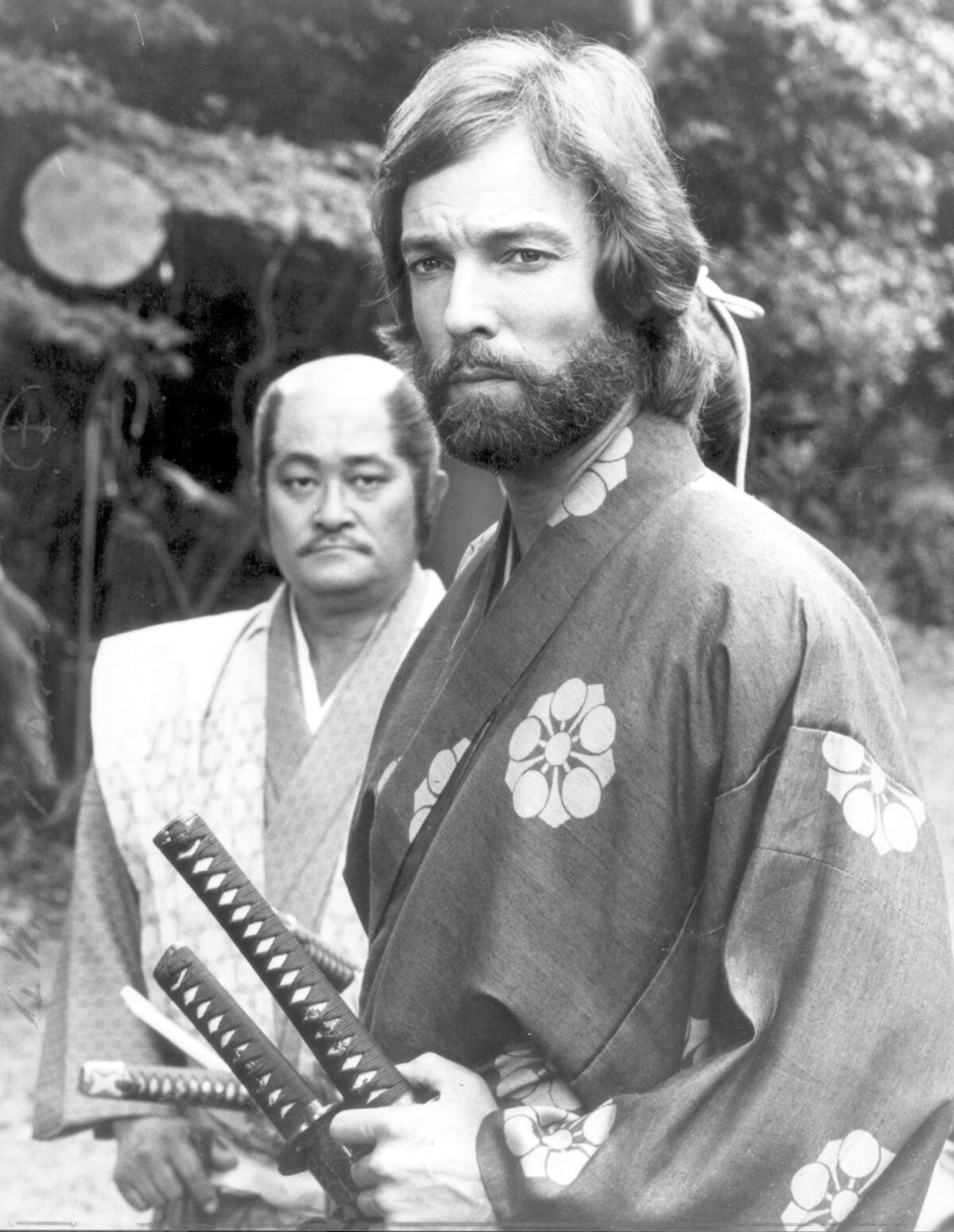
Richard Chamberlain, right, portrays John Blackthorne next to Frankie Sakai as Lord Yabu in the TV miniseries “Shogun.”
(NBC )
Then, in 1980, came his starring role in “Shogun,” an NBC miniseries set in feudal Japan in the year 1600. As John Blackthorne, a shipwrecked English navigator who is taken prisoner, he becomes involved in a battle among warlords seeking to become Japan’s supreme military ruler and falls in love with his married interpreter.
Chamberlain was unprepared for the response to his role in the critically acclaimed, highly rated miniseries.
“I’d forgotten about being besieged in supermarkets,” he told The Times in 1981. “I used to get it during my ‘Dr. Kildare’ days, but then it stopped and I forgot about it. Now it’s started all over again.”
In the 1983 ABC miniseries “The Thorn Birds,” he played Father Ralph, an ambitious Catholic priest who struggles with his vows after falling in love with the beautiful young niece (played by Rachel Ward) of the wealthy matriarch of a sprawling Australian sheep ranch (Barbara Stanwyck).
Dubbed the “king of the miniseries,” Chamberlain won Golden Globes and received Emmy nominations for his performances in both “Shogun” and “The Thorn Birds.”
He went on to earn another Emmy nomination as the star of the two-part “Wallenberg: A Hero’s Story” on NBC in 1985, in which he played a Swedish diplomat in Budapest who saved thousands of Hungarian Jews during World War II.
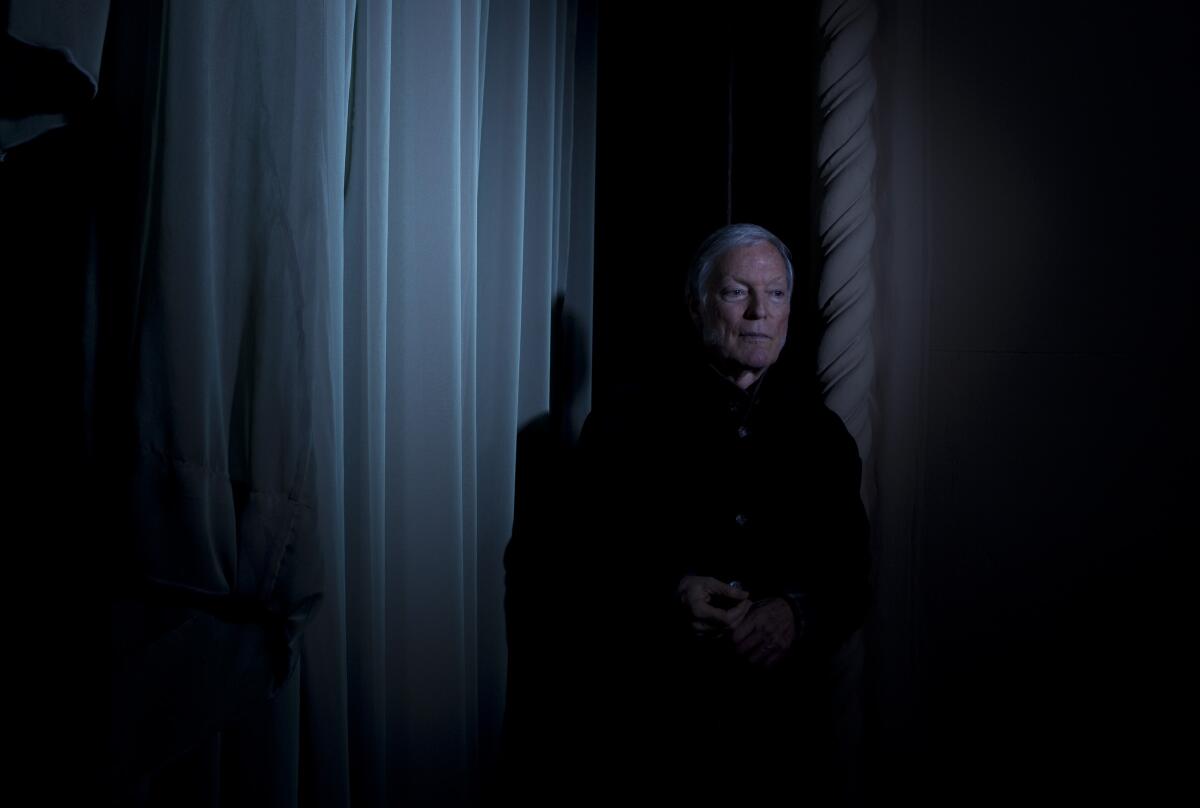
Actor Richard Chamberlain poses during his time at the Pasadena Playhouse while staring in “The Heiress” in 2012.
(Robert Gauthier / Los Angeles Times)
Born George Richard Chamberlain in Los Angeles on March 31, 1934, Chamberlain was named after his grandfather but was always called Dick or Richard. He and his older brother Bill grew up in Beverly Hills, in a three-bedroom house in what Chamberlain called “the wrong side of Wilshire Boulevard.”
His mother was a housewife. His father, a salesman for a small company that manufactured grocery-store fixtures, was an alcoholic whose periodic drinking binges devastated the family. When Chamberlain was about 9, his father joined Alcoholics Anonymous.
After graduating from Beverly Hills High School, where he was a four-year letterman in track, Chamberlain majored in art at Pomona College in Claremont. Despite being shy and inhibited, he began “moonlighting” in the drama department, where, he later wrote, he found himself “fast losing my heart to drama.”
Drafted into the Army after graduation, Chamberlain spent 16 months as an infantry company clerk in South Korea.
Intent on becoming an actor after his two-year stint in the Army, he returned to Los Angeles, where he was accepted into an acting workshop taught by blacklisted actor Jeff Corey and landed an agent.
Chamberlain quickly began doing guest roles on TV series such as “Gunsmoke,” “Bourbon Street Beat” and “Alfred Hitchcock Presents.”
Throughout most of his long career, Chamberlain took great pains to keep a secret from the public: He was gay.
Although his friends and people in show business knew, Chamberlain said he avoided talking about his private life in interviews, fearful of what it would do to a career built on his being a romantic lead opposite a woman.
But that changed with the publication of his candid memoir in 2003, a time in his life when, as he told the New York Times, he no longer had “an image to defend.”
By then, he had been in a more than two-decade-long relationship with Rabbett, an actor, producer and director. The two lived together in Hawaii until Chamberlain returned to Los Angeles in 2010 to resume his acting career.
Chamberlain had always hated himself for being gay, he told the Los Angeles Times in 2003. “I was as homophobic as the next guy,” he said. “I grew up thinking there was nothing worse.
“Sixty-eight years it took me to realize that I’d been wrong about myself. I wasn’t horrible at all. And now, suddenly, I’m free. Out of the prison I built for myself. It’s intoxicating. I can talk about it positively because I’m not afraid anymore.”
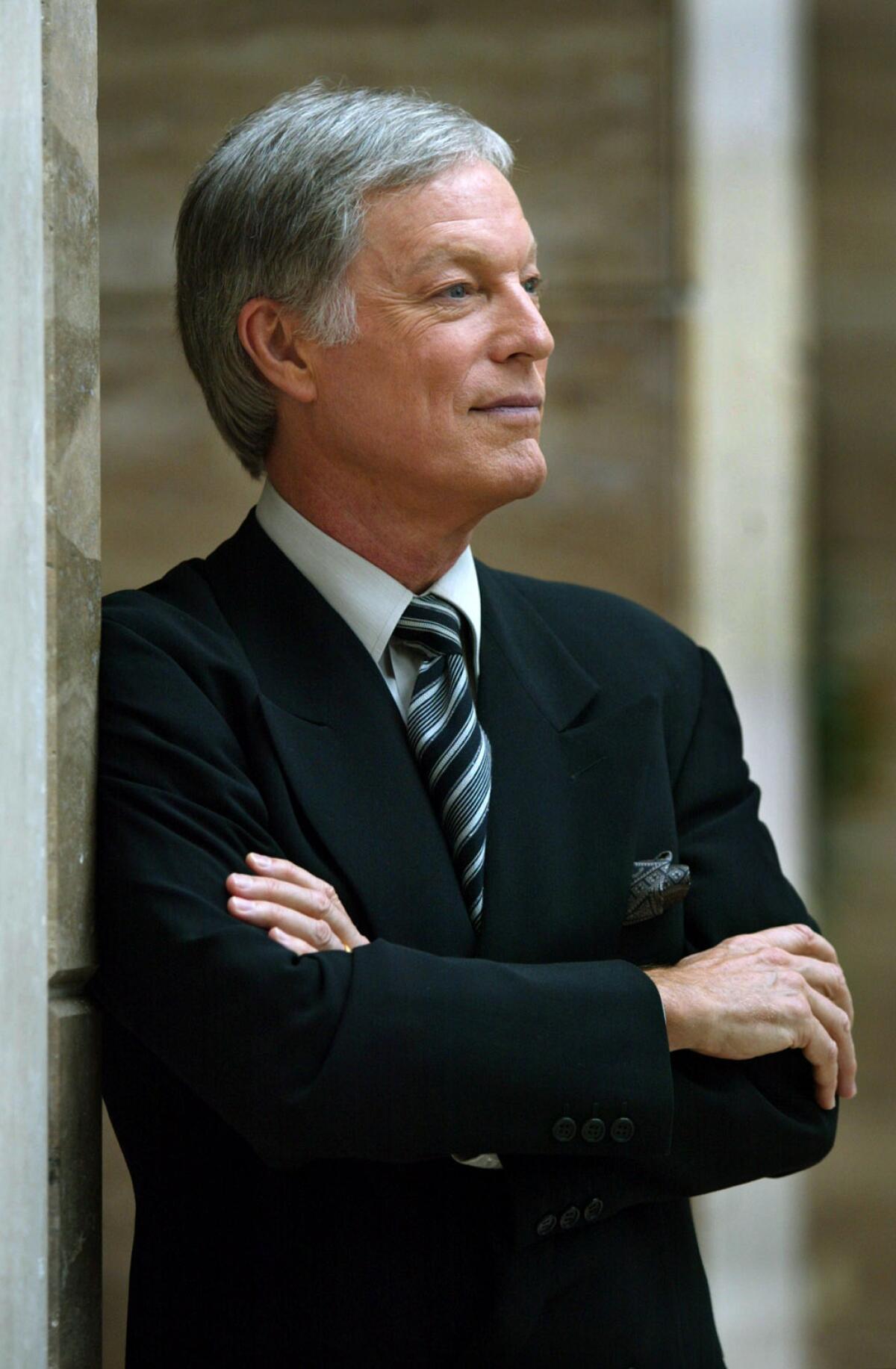
Actor Richard Chamberlain in 2003 in Los Angeles.
(Gary Friedman / Los Angeles Times)
Despite his concern over how the public would react, he found acceptance and warmth instead.
“Everyone has been so supportive, so positive ,” he said. “In New York, people walked up to me in the street, and in theaters. Strangers gave me the thumbs up, wished me well, said, ‘Good for you.’ I’m just awestruck by the change in the way I feel about life now.”
McLellan is a former Times staff writer.
